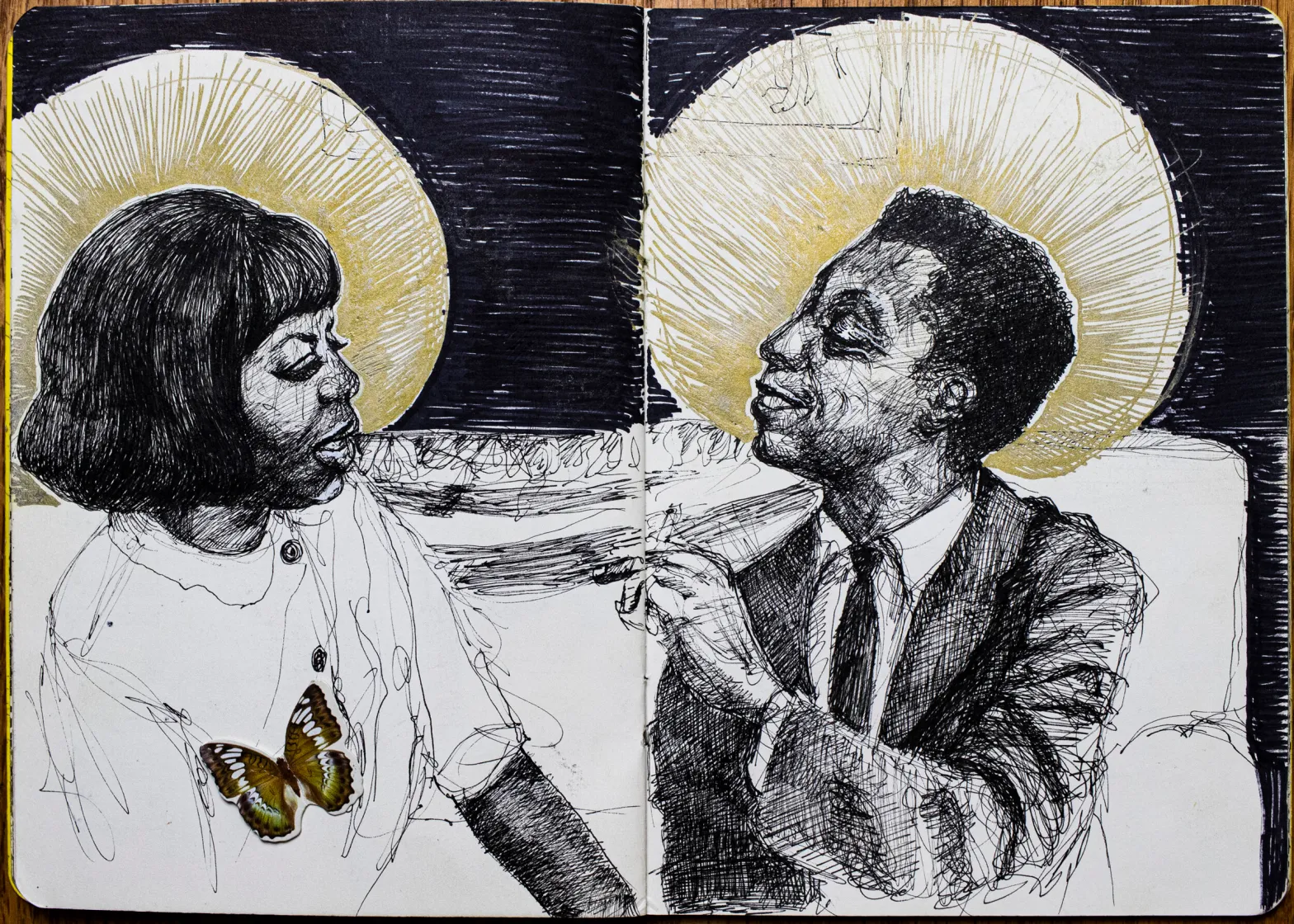DETROIT — Even 100 years after his birth, the words of writer and civil rights activist James Baldwin feel powerfully prescient, particularly as they relate to the United States’s long legacy of racial injustice. In celebration of the centennial of his birth on August 2, 2024, the Charles H. Wright Museum of African American History is showcasing the work of Sabrina Nelson, a Baldwin-obsessed Detroit-based artist and educator.
Nelson’s interest in Baldwin was sparked by an invitation from poet Jessica Care Moore to attend the “A Language to Dwell In”: James Baldwin, Paris, and International Visions conference in Paris in 2016. There, she began live-processing the event by repeatedly rendering Baldwin’s image in her sketchbook from memory. Nelson dedicated the next year to reading Baldwin’s writing and creating a further 91 images of Baldwin across multiple sketchbooks and larger-dimension media, such as paintings. Organized in partnership with co-curators Ashara Ekundayo and Omo Misha, Frontline Prophet: James Baldwin, which continues through February 25, 2025, combines many of Nelson’s depictions of the writer with installations of poetry and other ephemera suggestive of his legacy.
Nelson emphasizes the “prophet” part of the exhibition title, emphasizing how relevant Baldwin’s work remains today. “It seems like he saw it from his vantage point, the short life that he had while he was here, and he kept telling us these things,” she told Hyperallergic. “[He said:] ‘Hey, you can be president someday — maybe not right now, but someday there will be a Black president.’ ‘Hey, you should treat the folks in Palestine much better,’ right? He was in love with this country — and he felt, if he’s in love with this country, he gets to criticize her for not doing right to its citizens.”


The exhibition unpacks Baldwin’s legacy across multiple media. In addition to selections from Nelson’s years of iterative sketching and painting are hanging ceiling-to-floor sheafs of poetry by four contemporary poet laureates, including Tongo Eisen-Martin, Ayodele Nzinga, avery r. young, and Moore, as well as a Virtual Reality tour, an audio guide accessible via smartphone, and even a coloring station where visitors can make their own James Baldwin art using a template created by Nelson.


“The words that [Baldwin] said keep echoing in my head. I’m planting seeds and bringing his name forward so folks don’t forget him,” said Nelson. “When you ask somebody under 25 who James Baldwin is — I just randomly asked people, do you know who James Baldwin is — They’ll say, ‘I’ve heard of him, but I don’t really know.’”

Nelson has certainly succeeded in her aim of contextualizing Baldwin in a format accessible to people of all ages and interests. As the exhibition travels to places important to both of them, as well as co-curators Ekundayo and Misha — including New Orleans, Oakland, and Chicago — one can only hope it will plant many seeds for future prophets, or at least devotees of a true visionary.




